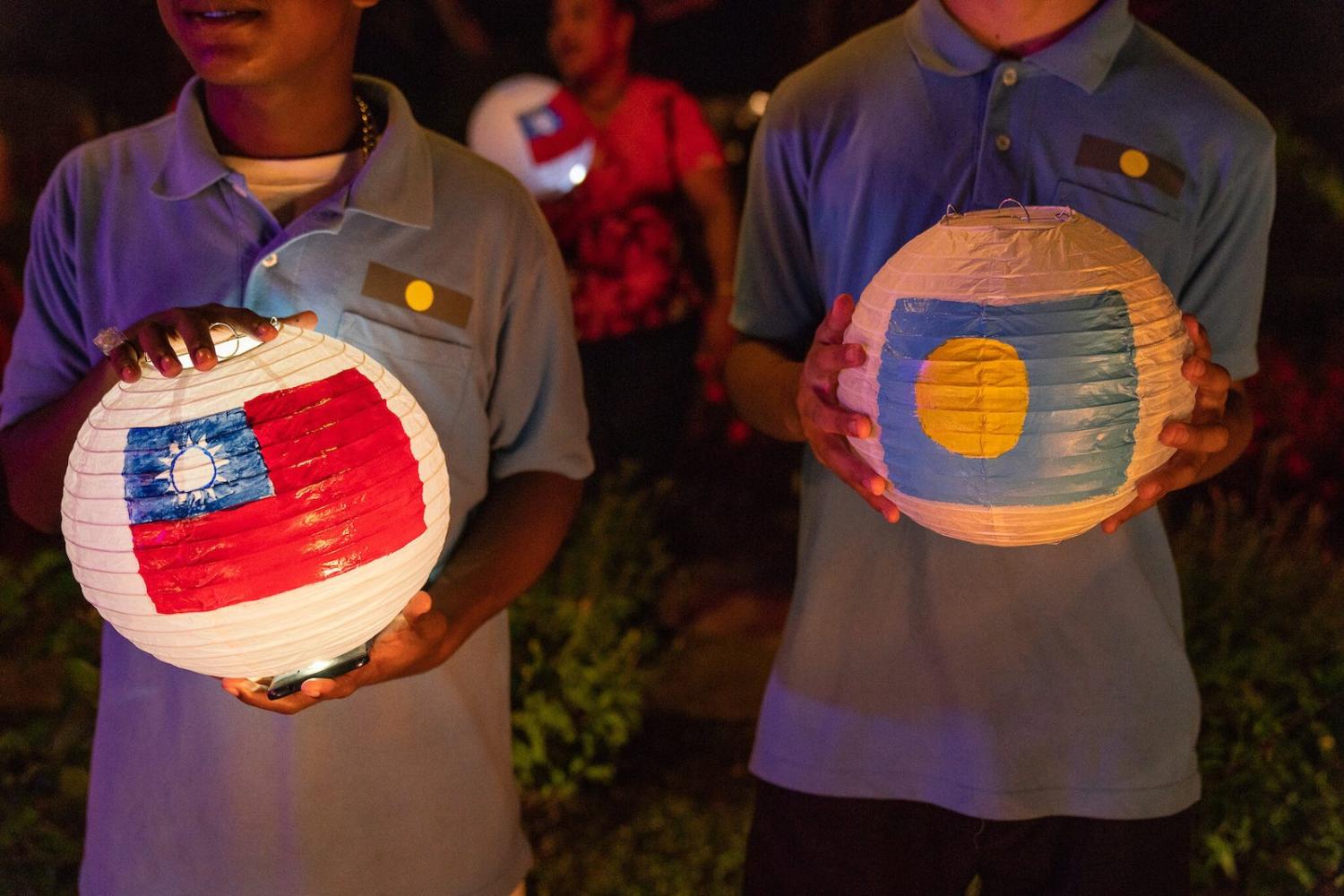In the battle for diplomatic recognition between China and Taiwan, China clearly has the upper hand. Taiwan maintains formal diplomatic recognition with only 17 countries, as China refuses to allow dual recognition. While an informal truce existed for much of the Ma Ying-jeou presidency in Taiwan (2008-2016), leading to no country switching recognition, China ended such policies with the election of Tsai Ing-wen.
Since then, five countries have broken relations with Taiwan: Panama, Burkina Faso, the Dominican Republic, Sao Tome and Principe, and El Salvador. Meanwhile, six countries in Oceania remain with Taiwan. Much attention has focused on Solomon Islands following local elections and talk of a diplomatic switch, an issue that will receive more prominence in the coming days with Australia’s Prime Minister Scott Morrison to make a flying visit to the capital Honiara.
With minimal coordination, Australia and the United States can fulfil their own interests in the region, prevent further Chinese influence, and provide a democratic Taiwan support.
Why do Taiwan’s formal relations in Oceania matter? After all, the six countries cannot guarantee Taiwan’s security, nor are they major trading partners of Taiwan. While formal diplomatic partners can speak on Taiwan’s behalf in international organisations in which Taiwan cannot join (e.g. the United Nations), the track record of actually doing this is inconsistent at best. The maintenance of these relationships spark frequent claims of “dollar diplomacy” in Taiwan, in that Taiwanese aid packages are essentially a quid pro quo for diplomatic recognition, a claim that Taiwanese officials vigorously deny.
Where these partners in Oceania do help is to reaffirm Taiwan’s sovereignty and prevent further diplomatic isolation. Moreover, many of the partners may be less vulnerable to switching than are countries in Central America and the Caribbean, the other two regions where most of Taiwan’s partners reside. This is in part due to China’s aggressive investment and assistance packages to these regions and exacerbated by the Trump administration reducing international assistance to many of the same countries.

Nauru broke relations with Taiwan in 2002 only to return in 2005, claiming that promised Chinese aid never materialised. Palau’s concerns about Chinese tourism and business ventures has led it to entrench its relations with Taiwan. In contrast, China’s efforts in the Solomon Islands have led many to assume a change in recognition is imminent, with concerns of a domino effect in the region.
Taiwan’s partnerships in the region also serve as an additional support against growing Chinese influence. In May, US Acting Assistant Secretary of State for Southeast Asia W. Patrick Murphy urged the six countries to remain with Taiwan, concerned about Chinese militarisation in a region in which the US has long been the dominant power. Such a message echoes similar concerns made by the US after several Central American and Caribbean countries broke relations. Similarly, Australia has spent additional aid in the region, in part to combat Chinese influence.
In short, Taiwan’s national interests converge with that of the US and Australia at least in terms of a shared concern about the implications of China being willing to use its political and economic leverage throughout the Pacific.
With this convergence, it may benefit both the US and Australia to provide additional incentives to prevent other countries from breaking relations with Taiwan. This could take many forms, from additional foreign aid to additional scholarships for study abroad opportunities to free trade agreements and travel. Such efforts would also lighten the burden on a Taiwan that in the long term simply cannot match the aid and investment packages of China.
Such US and Australian actions are unlikely to embolden Taiwan to think that it can try to lure countries in the region currently recognising China to break relations. Even if Taiwanese officials viewed these efforts as an opportunity to engage in “dollar diplomacy”, this assumes that additional countries in the region would be willing to forego relations with China. My previous research suggests the window of potentially persuadable countries were dwindling before the diplomatic truce in 2008, thus making it unlikely now, with added Chinese carrots and sticks, that Taiwan could persuade a country.
Furthermore, while China may object to such efforts, providing aid and incentives for countries recognising Taiwan does not explicitly violate the “One China Policy” that both the US and Australia continue to pay lip service. Nor has China directly responded to American appeals to recognising countries that they remain with Taiwan, so one can assume a similar non-response if Australia follows suit.
Australia need not follow American efforts to expand connections with Taiwan, such as allowing for high-level government officials to travel to Taiwan, actions that blur the distinctions between formal and informal relations. However, with minimal coordination, Australia and the United States can fulfil their own interests in the region, prevent further Chinese influence, and provide a democratic Taiwan support, albeit indirectly, at a crucial time where China continues to try to minimise Taiwan’s international space.


